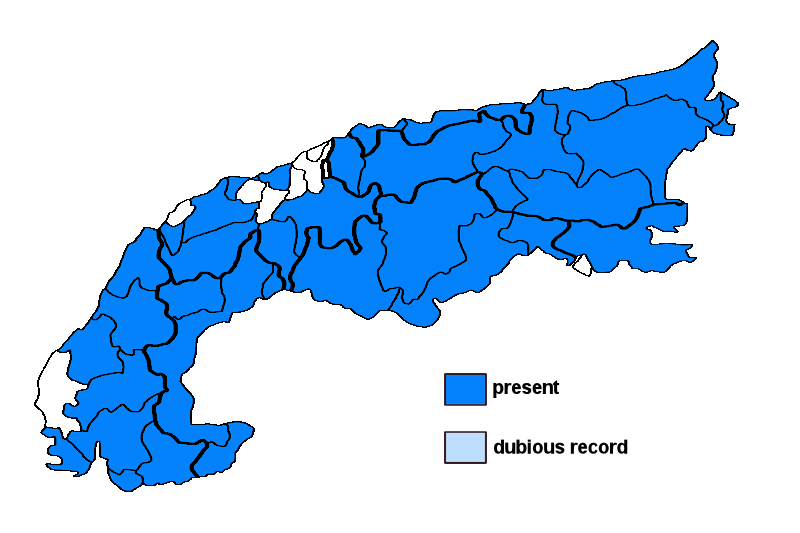Lecanora campestris (Schaer.) Hue
Syn.: Lecanora atra (Huds.) Ach. var. expansa Ach., Lecanora campestris (Schaer.) Hue var. expansa (Ach.) Erichsen, Lecanora genuensis B. de Lesd., Lecanora maceriaecola B. de Lesd., Lecanora ossicola Erichsen, Lecanora subfusca (L.) Ach. var. campestris (Schaer.) Rabenh., Lecanora subglabrata Werner, Lecanora viridans Maheu & Werner, Parmelia subfusca (L.) Ach. var. campestris Schaer.
Lichenised.
Substrate: siliceous rocks, intermediate rocks (such as calciferous schists)
Altitudinal range: from the mesomediterranean belt (potential vegetation: evergreen broad-leaved forests dominated by Quercus ilex) to the subalpine belt (potential vegetation: open, taiga-like forests dominated by Larix decidua and/or Pinus cembra and Rhododendron)
Note: a holarctic lichen mostly found on basic siliceous rocks (rarely also on superficially decalcified limestone), especially hard sandstone, often on small stones or on surfaces not far from the ground; widespread throughout the Alps, mostly below treeline.
Austria: Vorarlberg; Tirol; Salzburg; Kärnten; Steiermark; Oberösterreich; Niederösterreich (incl. Wien); Burgenland; Germany: Oberbayern; Schwaben; Switzerland: Bern; Graubünden; Luzern; Schwyz; Ticino; Vaud; Valais; France: Alpes-de-Haute-Provence; Haute-Alpes; Alpes-Maritimes; Isère; Savoie; Haute-Savoie; Vaucluse; Var; Italy: Friuli; Veneto; Trentino Alto Adige; Lombardia; Piemonte; Valle d'Aosta; Liguria; Slovenia: Alpine and Pre-Alpine Slovenia;





